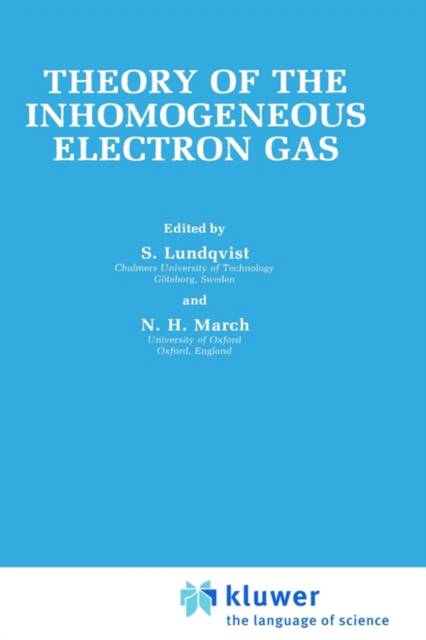
- Afhalen na 1 uur in een winkel met voorraad
- Gratis thuislevering in België vanaf € 30
- Ruim aanbod met 7 miljoen producten
- Afhalen na 1 uur in een winkel met voorraad
- Gratis thuislevering in België vanaf € 30
- Ruim aanbod met 7 miljoen producten
Zoeken
Theory of the Inhomogeneous Electron Gas
€ 381,95
+ 763 punten
Omschrijving
The theory of the inhomogeneous electron gas had its origin in the Thomas- Fermi statistical theory, which is discussed in the first chapter of this book. This already leads to significant physical results for the binding energies of atomic ions, though because it leaves out shell structure the results of such a theory cannot reflect the richness of the Periodic Table. Therefore, for a long time, the earlier method proposed by Hartree, in which each electron is assigned its own personal wave function and energy, dominated atomic theory. The extension of the Hartree theory by Fock, to include exchange, had its parallel in the density description when Dirac showed how to incorporate exchange in the Thomas-Fermi theory. Considerably later, in 1951, Slater, in an important paper, showed how a result similar to but not identical with that of Dirac followed as a simplification of the Hartree-Fock method. It was Gombas and other workers who recognized that one could also incorporate electron correlation consistently into the Thomas-Fermi-Dirac theory by using uniform electron gas relations locally, and progress had been made along all these avenues by the 1950s.
Specificaties
Betrokkenen
- Uitgeverij:
Inhoud
- Aantal bladzijden:
- 396
- Taal:
- Engels
- Reeks:
Eigenschappen
- Productcode (EAN):
- 9780306412073
- Verschijningsdatum:
- 31/07/1983
- Uitvoering:
- Hardcover
- Formaat:
- Genaaid
- Afmetingen:
- 160 mm x 245 mm
- Gewicht:
- 784 g

Alleen bij Standaard Boekhandel
+ 763 punten op je klantenkaart van Standaard Boekhandel
Beoordelingen
We publiceren alleen reviews die voldoen aan de voorwaarden voor reviews. Bekijk onze voorwaarden voor reviews.







